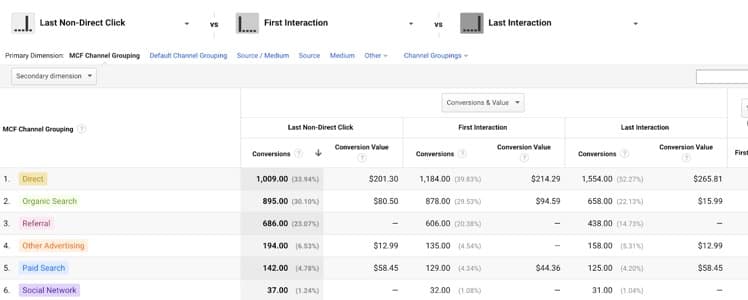
How to Perform An Attribution Analysis Using Google Analytics
Selling products or services online has many similarities to in-person sales. But it can be argued that determining exactly how a conversion occurred, or conversion attribution, isn’t one of them.
Think of it this way. If you own a store, and a customer comes in and purchases something, you can ask the customer how they found you. For instance, if they heard about the store or your products from an advertisement, you can attribute the conversion to the advertising campaign. If they bring in a printed coupon, you can credit that campaign as the reason they found you.
But online shopping doesn’t always have such clear and easy paths. eCommerce attribution analysis can be tricky because customers don’t always make a straight line to your website and immediately make a purchase.
A customer may click on a Facebook ad, or a post from a friend, but still not buy anything. That may result in a future re-targeted ad appearing in their browser, which they click on, but still not buy anything. But perhaps your product is now stuck in their mind, and at some point, in time they enter your website directly in their browser, find what they want, and make a purchase.
To which process do you attribute that conversion?
It’s important to know, so let’s explore how you can do attribution analysis using Google Analytics.
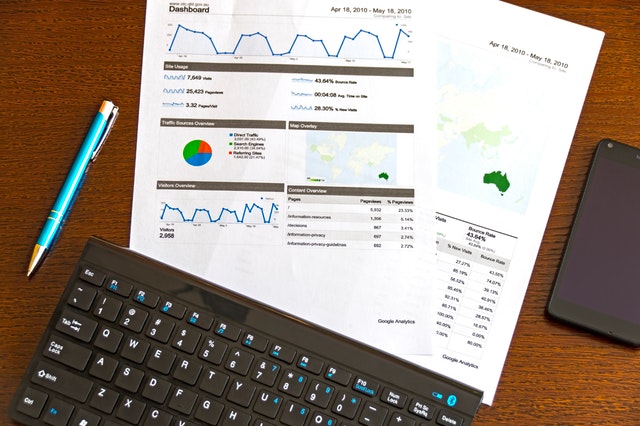
Let’s start with a brief look at why it’s important to have an understanding of attribution models, and to use them to analyze various conversion points.
First, in Google Analytics (GA), the default acquisition report provides all the conversion credit to the Last Non-Direct Channel. This means it ignores direct traffic and instead attributes conversion to the last channel the customer clicked through before converting.
This can be a good benchmark, but it’s only looking at the channel that is the finish line for the customer, where they converted. If all the credit goes to the last non-direct channel, it could lead you to eliminate your other channels, which may be a mistake.
Looking at Acquisition > All Traffic > Channels will give credit to the last non-direct channel.
But it’s important to look deeper, to understand, for example, whether your social campaign is reaping rewards. It might be a much different view if you looked at a First Interaction Model.
Using our example above, looking at different attribution models can give you insight into how your customer finally converted into a sale, by showing what channel first exposed the customer to your brand. It’s important to know the entire customer journey and not just the channel that got them across the finish line.
Google actually has seven models that you can use to do comparisons:
Let’s explore using these to your benefit.
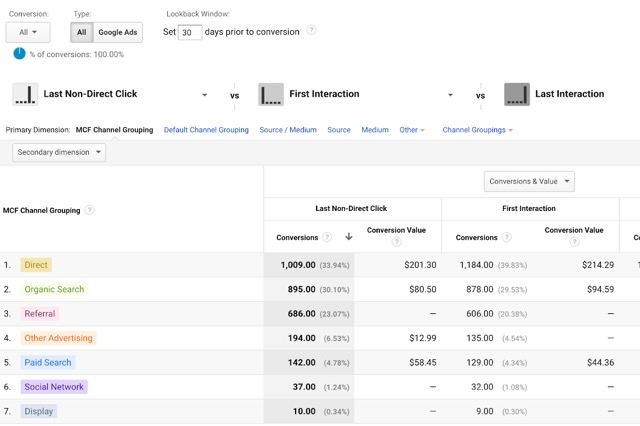
To dig deeper and get insight into the success of your various channels, GA has developed the seven attribution models, and then a model comparison tool. Using the models and comparing them can give you a deeper understanding of which marketing channels are providing value to your business.
The data you will receive can help deepen your understanding of your customers, your prospects and the ROI of your marketing channels.
The type of data you choose to look at can also relate to your goals. For instance, if you are focused on brand awareness, you may want to look at the first interaction attribution data.
So let’s look at the various models, and what data they can provide, followed by examples using each model.
Here’s how you find them.
Conversions > Attribution > Model Comparison Tool
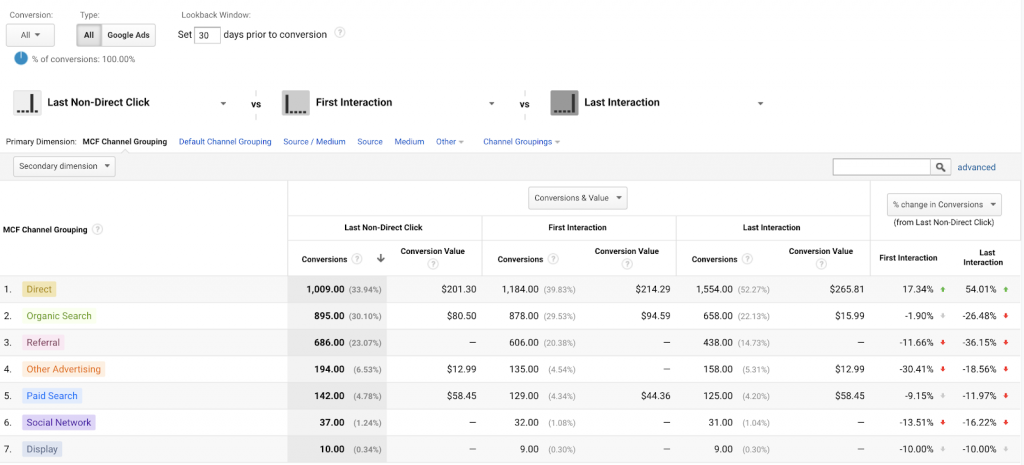
1. Last Non-Direct Click or Interaction
As mentioned, this model is the default for non-Multi-Channel Funnels reports. It ignores the direct traffic and instead attributes all of the conversion value to the last channel from which the customer clicked through before converting. This can be a good benchmark to use to compare to other models. It can also help you focus on traffic that comes from the last marketing activity before conversion.
This will attribute all the conversion value to the first channel the customer interacted with, which can be valuable to analyze if you’re running campaigns for awareness. This allows you to focus on the channels that first exposed customers to your brand.
3. Last interaction
This model attributes conversion value to the last channel that the customer interacted with right before buying. This can be valuable if you have campaigns designed to attract people at the time of purchase.
This model gives equal credit to each channel on the customer’s journey to conversion. This can be valuable if your campaign is designed to engage the customer throughout the sales cycle. This gives equal consideration to each touchpoint through the cycle.
5. Time decay
This model most heavily credits the touchpoints that happen closest to the time of conversion, so it’s valuable for shorter consideration cycles. The concept is called exponential decay. With a default window of 30 days, a touchpoint occurring seven days prior to conversion receives half the credit of a touch point on the day of conversion; a touchpoint 14 days prior receives ¼ the credit. One way this could be used is if you run a two-day promotion, and you want to give more credit to those conversions that occur during the promotion.
This model gives all the conversion value to the most recent advertisement the customer clicked through before the conversion or purchase. This is valuable if you want to give credit to the advertisements that created the most conversions.
7. Position based
This model gives you the flexibility to combine the Last Interaction and First Interaction models. It allows you to split the credit between the first and last interactions, rather than give complete conversion credit to one of them. For instance, you can assign a percentage to each (say, 40%), and then assign 20% to the interaction between first and last. This can help you determine the best ways that customers were introduced to your brand, as well as those that resulted in the final sale.

Let’s look at a specific example to show you what the different models will display for a customer conversion.
Customer X has found your site by clicking on a Google ad. A week later, Customer X returns by clicking on a Facebook link. Later that day, Customer X returns again by responding to your email campaign, and then a few hours later returns to make a purchase.
Here’s what the models would tell you:
1. Last non-direct interaction: All the credit for the sale would go to the last channel the customer clicked through before converting, and all direct traffic is ignored. In our example, the credit would go to the email channel.
2. First interaction: The first touchpoint, which would be the paid search or Google ad, would get all the credit for the conversion.
3. Last interaction: The last touchpoint would receive credit for the conversion, which would be the direct channel since the customer came directly to the site to make the purchase.
4. Linear: This would share credit among all the touchpoints in the customer’s journey to make the purchase. The ad, social network, email and direct channel would each get 25% credit for the conversion.
5. Time decay: Those touchpoints that were closest to the time of sale would get the greatest credit. In our example, that means email and the direct channel would get the most credit, followed by the social network, and finally, the ad would receive the least credit.
6. Last Ad click: In our example, there was only one click on an ad, so it would get all the credit for the conversion.
7. Position based: This would assign 40% to each of the first interaction (the ad) and the last interaction (the direct channel) and then 20% would be assigned to the remaining interactions in the middle of the customer journey (social network and email each receive 10% credit).
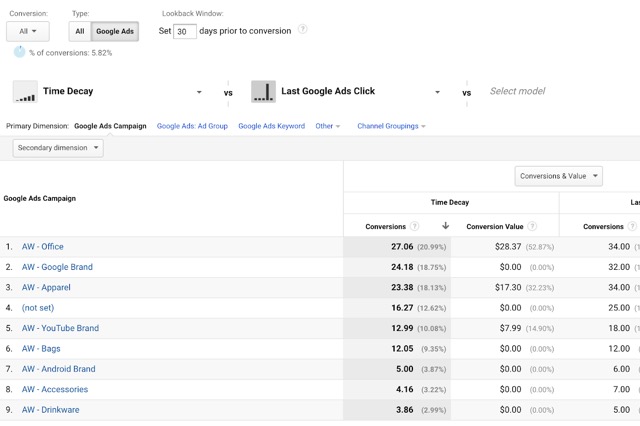
Those are the models and an example using them. As well, Google Analytics has a comparison tool that allows you to view reports that compare up to three models at once. This lets you compare the valuation of your various marketing channels using a variety of data points.
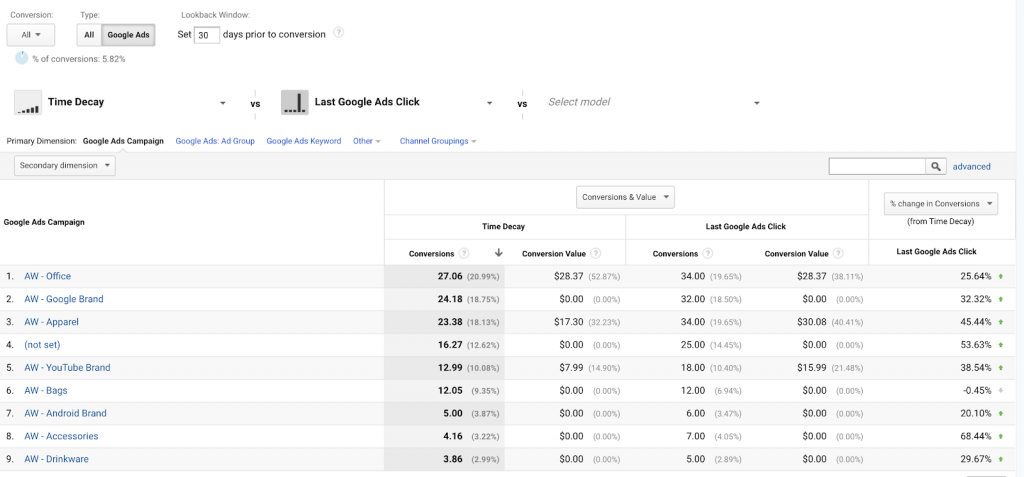
As you get more skilled and deepen your understanding of the attribution models, you can also create up to 10 custom attribution models that allow you to specify certain rules.

The attribution model or models you decide to use will depend on your business and the goals you have for it. There isn’t one perfect choice for every business, but these tips will help you analyze your various marketing channels and get a deeper understanding of the return on investment for each channel.
This doesn’t mean attribution analysis is the only way you should analyze your customer base and how to attract new customers. But it can give you better insight into how potential customers become customers and using this knowledge you can devote your time and money to high-performing channels.
Author: Danielle Canstello
Danielle Canstello is part of the content marketing team at Pyramid Analytics. They provide enterprise-level analytics and business intelligence software. In her spare time, she writes around the web to spread her knowledge of marketing, business intelligence and analytics industries.